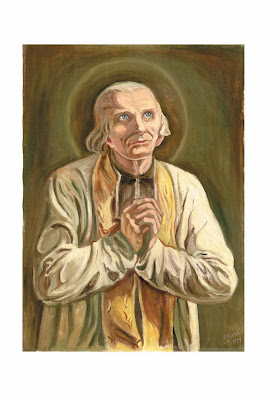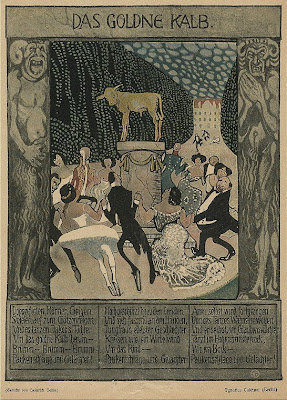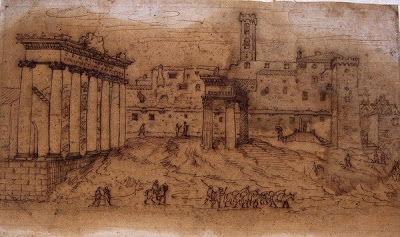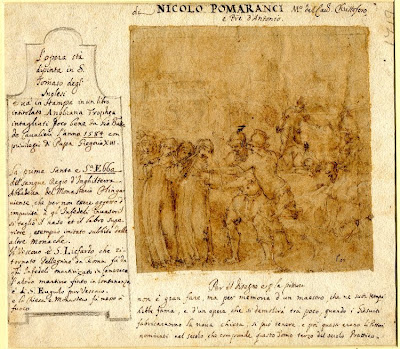 Icon of SS Peter and Paul
Icon of SS Peter and PaulFirst third of the 13th century
139 × 90 cm
The Russian Museum, Saint Petersburg, Russia
The word “Icon” is an overworked word these days. Whenever a celebrity dies, it is usual to identify them as an “an icon”.
It is an attempt to make sacred something human. It blurs the distinction between the secular and the divine.
Icons are devotional images—windows through which viewer and holy subject make contact.
Icons depict a holy and infinite presence, not the temporal physical world
In A catalogue of the Russian icons in the British Museum by Yury Bobrov, the author writes:
““The icon in its artistic form embodies that ascetic ideal, which, the Church Fathers considered neither intellectual, nor even moral, but artistic labour. The main goal of such art is a specific, non-formalized, ‘contemplative’ knowledge. Paradoxically, it is precisely this fundamental property of the icon which gives grounds to the contemporary philosophers who define the icon as ‘not art’ in the traditional European sense of the term”
He goes on:
““[The icon`s] purpose being to depict, through pigments on a flat surface, the likeness of a real prototype. ... ‘The main function of the image’, in the words of V. Bychkov, ‘became one of worship; that is, they saw in the icon, first and foremost, a holy object of veneration’ The Kievan Metropolitan Ilarion (mid-11th century) believed that a person contemplating an icon penetrates by his ‘interior gaze’ beyond the representation, and thus gains the possibility of spiritual intercourse with the prototype. And this, he writes in the Sermon on Law and Grace, ‘fills his soul with joy’ “
He concludes:
“What is such an ‘icon’ then, wherein lies its meaning? The icon has been described as an archaeological item; the icon has been analysed as a work of art. The Church understands the icon as a sacred image of a higher, divine reality, as a visible reflection of the invisible. The uniqueness of the phenomenon of the icon is that all these qualities are simultaneously present. But the most important thing that distinguishes an icon from a painting is its manmade incarnation of the invisible prototype, of ‘alternative reality’.
In order to understand the language of the icon one needs to find in oneself the desire to meet with this reality, to ‘enter’ into it, one needs to learn to ‘read’ the icon. It is not accidental that in Russian the creation of an icon signifies not pisat’ kraskami ‘to write with colours’ (to paint) but pisat’ perom ‘to write with a pen’ (to write). The art of iconography is not ‘icon painting’, but ‘icon writing’.
Moreover, the icon must never be regarded as a simple illustration to the Gospels or other theological texts. Visual form and Word are here fused together, and the artistic language of icon painting directly embodies spiritual phenomena.
Thus the highlights on an icon are not in the least depictions of gleams of light, invoked to create the illusion of rounded form, but a strict system of ‘highlights’ invoking the symbolic incarnation of the emanation of divine energy, which is poured into the world and gives life and meaning to all the created world.
In its spiritual symbolism the ancient icon is equal to the contemporary, bearing in mind the differences in strength of the artistic incarnation. The icon painter, layering with colours or gold ‘light’, does not adorn the representation, does not create the illusion of three-dimensionality, but embodies the radiance of the ‘Light of Mount Tabor’.”
In the United Kingdom, some of the most beautiful Russian icons are found in The British Museum in London.
There is also a beautiful and significant collection in Blackburn, in the North of England. The Icon Collection at Blackburn Museum and Art Gallery comprises 61 icons.
Twenty-seven were seized by Her Majesty’s Customs and Excise from a Russian boat trying to smuggle them into England for sale, and given to Blackburn Museum and Art Gallery.
For the collection and an interesting and informative commentary on icons, see The Blackburn Museum and Art Gallery website



















































